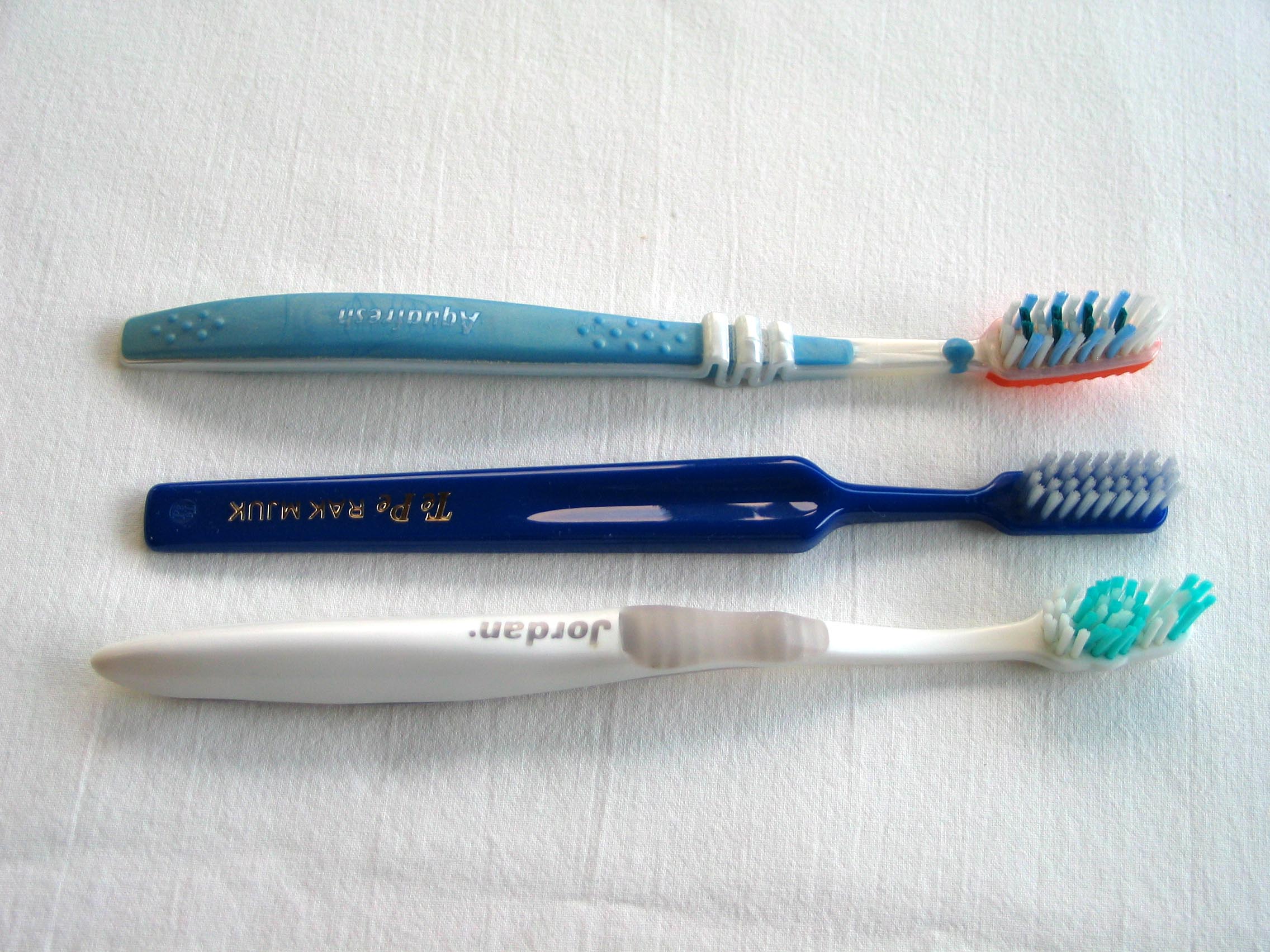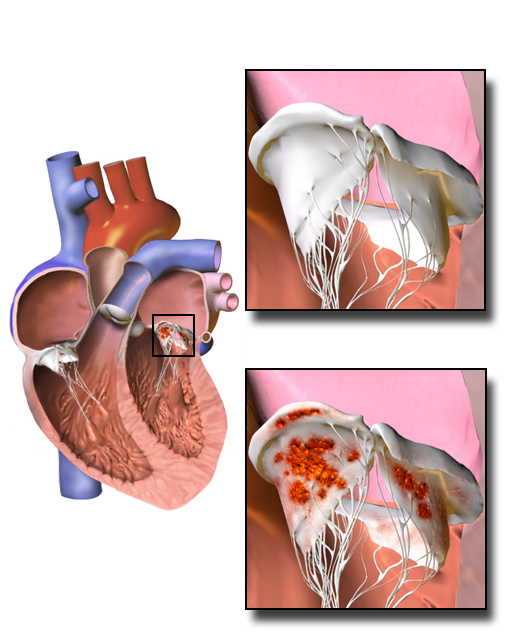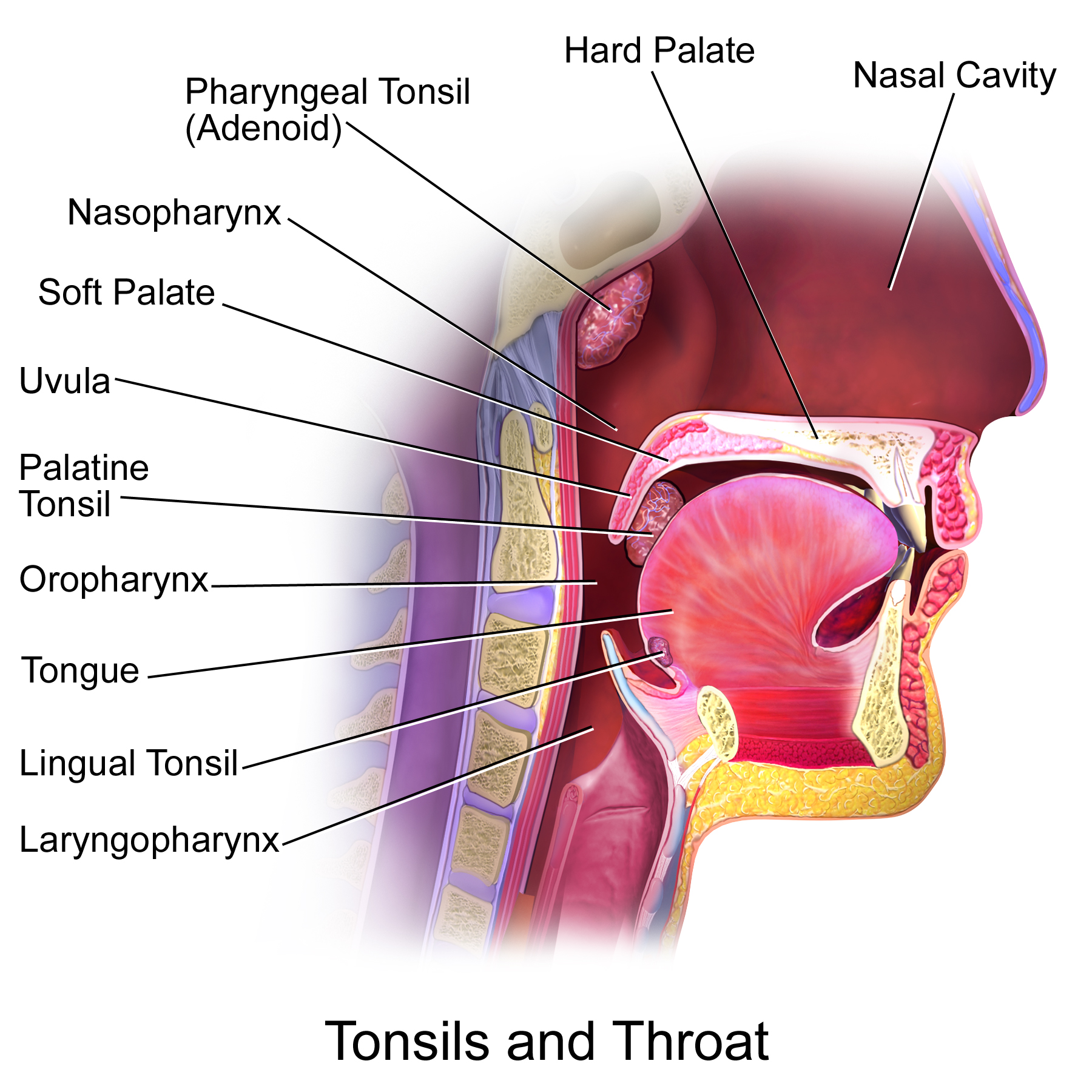|
Tongue Cleaning
A tongue cleaner (also called a tongue scraper or tongue brush) is an oral hygiene device designed to clean the coating on the upper surface of the tongue. While there is tentative benefit from the use of a tongue cleaner it is insufficient to draw clear conclusions regarding bad breath. A 2006 Cochrane review found tentative evidence of decreased levels of odor molecules. The large surface area and lingual papilla are anatomical features of the tongue that promote tongue coating by retaining microorganisms and oral debris consisting of food, saliva and dead epithelial cells. Tongue cleaning is done less often than tooth brushing, flossing, and using mouthwash. Health effects Breath While there is tentative benefit from the use of a tongue cleaner it is insufficient to draw clear conclusions with respect to bad breath. A 2006 Cochrane review found tentative evidence of decreased levels of odor molecules. Some studies have shown that it is the bacteria on the tongue which o ... [...More Info...] [...Related Items...] OR: [Wikipedia] [Google] [Baidu] |
Tonsils
The tonsils are a set of lymphoid organs facing into the aerodigestive tract, which is known as Waldeyer's tonsillar ring and consists of the adenoid tonsil, two tubal tonsils, two palatine tonsils, and the lingual tonsils. These organs play an important role in the immune system. When used unqualified, the term most commonly refers specifically to the palatine tonsils, which are two lymphoid organs situated at either side of the back of the human throat. The palatine tonsils and the adenoid tonsil are organs consisting of lymphoepithelial tissue located near the oropharynx and nasopharynx (parts of the throat). Structure Humans are born with four types of tonsils: the pharyngeal tonsil, two tubal tonsils, two palatine tonsils and the lingual tonsils. Development The palatine tonsils tend to reach their largest size in puberty, and they gradually undergo atrophy thereafter. However, they are largest relative to the diameter of the throat in young children. In adults, each p ... [...More Info...] [...Related Items...] OR: [Wikipedia] [Google] [Baidu] |
Toothbrush
A toothbrush is an oral hygiene tool used to clean the teeth, gums, and tongue. It consists of a head of tightly clustered bristles, atop of which toothpaste can be applied, mounted on a handle which facilitates the cleaning of hard-to-reach areas of the mouth. They should be used in conjunction with something to clean between the teeth where the bristles of the toothbrush cannot reach - for example floss, tape or interdental brushes. They are available with different bristle textures, sizes, and forms. Most dentists recommend using a soft toothbrush since hard-bristled toothbrushes can damage tooth enamel and irritate the gums. Because many common and effective ingredients in toothpaste are harmful if swallowed in large doses and instead should be spat out, the act of brushing teeth is most often done at a sink within the kitchen or bathroom, where the brush may be rinsed off afterwards to remove any debris remaining and then dried to reduce conditions ideal for germ growth ... [...More Info...] [...Related Items...] OR: [Wikipedia] [Google] [Baidu] |
Ama (ayurveda)
Ayurveda () is an alternative medicine system with historical roots in the Indian subcontinent. The theory and practice of Ayurveda is pseudoscientific. Ayurveda is heavily practiced in India and Nepal, where around 80% of the population report using it. Ayurveda therapies have varied and evolved over more than two millennia. Therapies include herbal medicines, special diets, meditation, yoga, massage, laxatives, enemas, and medical oils. Ayurvedic preparations are typically based on complex herbal compounds, minerals, and metal substances (perhaps under the influence of early Indian alchemy or '' rasashastra''). Ancient Ayurveda texts also taught surgical techniques, including rhinoplasty, kidney stone extractions, sutures, and the extraction of foreign objects. The main classical Ayurveda texts begin with accounts of the transmission of medical knowledge from the gods to sages, and then to human physicians. Printed editions of the ''Sushruta Samhita'' (''Sushruta's Compend ... [...More Info...] [...Related Items...] OR: [Wikipedia] [Google] [Baidu] |
Ayurveda
Ayurveda () is an alternative medicine system with historical roots in the Indian subcontinent. The theory and practice of Ayurveda is pseudoscientific. Ayurveda is heavily practiced in India and Nepal, where around 80% of the population report using it. Ayurveda therapies have varied and evolved over more than two millennia. Therapies include herbal medicines, special diets, meditation, yoga, massage, laxatives, enemas, and medical oils. Ayurvedic preparations are typically based on complex herbal compounds, minerals, and metal substances (perhaps under the influence of early Indian alchemy or '' rasashastra''). Ancient Ayurveda texts also taught surgical techniques, including rhinoplasty, kidney stone extractions, sutures, and the extraction of foreign objects. The main classical Ayurveda texts begin with accounts of the transmission of medical knowledge from the gods to sages, and then to human physicians. Printed editions of the '' Sushruta Samhita'' (''Sushruta's ... [...More Info...] [...Related Items...] OR: [Wikipedia] [Google] [Baidu] |
Tongue Scraper Ayurvedic Copper
The tongue is a muscular organ in the mouth of a typical tetrapod. It manipulates food for mastication and swallowing as part of the digestive process, and is the primary organ of taste. The tongue's upper surface (dorsum) is covered by taste buds housed in numerous lingual papillae. It is sensitive and kept moist by saliva and is richly supplied with nerves and blood vessels. The tongue also serves as a natural means of cleaning the teeth. A major function of the tongue is the enabling of speech in humans and vocalization in other animals. The human tongue is divided into two parts, an oral part at the front and a pharyngeal part at the back. The left and right sides are also separated along most of its length by a vertical section of fibrous tissue (the lingual septum) that results in a groove, the median sulcus, on the tongue's surface. There are two groups of muscles of the tongue. The four intrinsic muscles alter the shape of the tongue and are not attached to bone. The f ... [...More Info...] [...Related Items...] OR: [Wikipedia] [Google] [Baidu] |
Bacteremia
Bloodstream infections (BSIs), which include bacteremias when the infections are bacterial and fungemias when the infections are fungal, are infections present in the blood. Blood is normally a sterile environment, so the detection of microbes in the blood (most commonly accomplished by blood cultures) is always abnormal. A bloodstream infection is different from sepsis, which is the host response to bacteria. Bacteria can enter the bloodstream as a severe complication of infections (like pneumonia or meningitis), during surgery (especially when involving mucous membranes such as the gastrointestinal tract), or due to catheters and other foreign bodies entering the arteries or veins (including during intravenous drug abuse). Transient bacteremia can result after dental procedures or brushing of teeth. Bacteremia can have several important health consequences. The immune response to the bacteria can cause sepsis and septic shock, which has a high mortality rate. Bacter ... [...More Info...] [...Related Items...] OR: [Wikipedia] [Google] [Baidu] |
Infective Endocarditis
Infective endocarditis is an infection of the inner surface of the heart, usually the valves. Signs and symptoms may include fever, small areas of bleeding into the skin, heart murmur, feeling tired, and low red blood cell count. Complications may include backward blood flow in the heart, heart failure – the heart struggling to pump a sufficient amount of blood to meet the body's needs, abnormal electrical conduction in the heart, stroke, and kidney failure. The cause is typically a bacterial infection and less commonly a fungal infection. Risk factors include valvular heart disease, including rheumatic disease, congenital heart disease, artificial valves, hemodialysis, intravenous drug use, and electronic pacemakers. The bacteria most commonly involved are streptococci or staphylococci. Diagnosis is suspected based on symptoms and supported by blood cultures or ultrasound of the heart. There is also a noninfective form of endocarditis. The usefulness of antibiotic ... [...More Info...] [...Related Items...] OR: [Wikipedia] [Google] [Baidu] |
Lingual Tonsils
The lingual tonsils are a collection of lymphatic tissue located in the lamina propria of the root of the tongue. This lymphatic tissue consists of the lymphatic nodules rich in cells of the immune system (immunocytes). The immunocytes initiate the immune response when the lingual tonsils get in contact with invading microorganisms (pathogenic bacteria, viruses or parasites). Structure Microanatomy Lingual tonsils are covered externally by stratified squamous nonkeratinized epithelium that invaginates inward forming crypts. Beneath the epithelium is a layer of lymphoid nodules containing lymphocytes. Mucous glands located at the root of tongue are drained through several ducts into the crypt of lingual tonsils. Secretions of these mucous glands keep the crypt clean and free of any debris. Blood supply Lingual tonsils are located on posterior aspect of tongue which is supplied through: * Lingual artery, branch of external carotid artery * Tonsillar branch of facial artery * ... [...More Info...] [...Related Items...] OR: [Wikipedia] [Google] [Baidu] |
Gag Reflex
The pharyngeal reflex or gag reflex is a reflex muscular contraction of the back of the throat, evoked by touching the roof of the mouth, the back of the tongue, the area around the tonsils, the uvula, and the back of the throat. It, along with other aerodigestive reflexes such as reflexive pharyngeal swallowing, prevents objects in the oral cavity from entering the throat except as part of normal swallowing and helps prevent choking, and is a form of coughing. The pharyngeal reflex is different from the laryngeal spasm, which is a reflex muscular contraction of the vocal cords. Reflex arc In a reflex arc, a series of physiological steps occur very rapidly to produce a reflex. Generally a sensory receptor receives an environmental stimulus, in this case from objects reaching nerves in the back of the throat, and sends a message via an afferent nerve to the central nervous system (CNS). The CNS receives this message and sends an appropriate response via an efferent nerve (also ... [...More Info...] [...Related Items...] OR: [Wikipedia] [Google] [Baidu] |
Periodontitis
Periodontal disease, also known as gum disease, is a set of inflammatory conditions affecting the tissues surrounding the teeth. In its early stage, called gingivitis, the gums become swollen and red and may bleed. It is considered the main cause of tooth loss for adults worldwide.V. Baelum and R. Lopez, “Periodontal epidemiology: towards social science or molecular biology?,”Community Dentistry and Oral Epidemiology, vol. 32, no. 4, pp. 239–249, 2004.Nicchio I, Cirelli T, Nepomuceno R, et al. Polymorphisms in Genes of Lipid Metabolism Are Associated with Type 2 Diabetes Mellitus and Periodontitis, as Comorbidities, and with the Subjects' Periodontal, Glycemic, and Lipid Profiles Journal of Diabetes Research. 2021 Jan;2021. PMCID: PMC8601849. In its more serious form, called periodontitis, the gums can pull away from the tooth, bone can be lost, and the teeth may loosen or fall out. Bad breath may also occur. Periodontal disease is generally due to bacteria in the mouth ... [...More Info...] [...Related Items...] OR: [Wikipedia] [Google] [Baidu] |
Periodontal Pathogen
Well studied Periodontal pathogens are bacteria that have been shown to significantly contribute to periodontitis. Dental plaque, the precursor of periodontal disease, is a complex biofilm consisting mainly of bacteria, but also archaea, protozoa, fungi and viruses. Viruses that specifically infect bacteria - bacteriophages - are most common in the oral cavity. Viral roles in the progression of periodontal disease as of 2017 remains poorly explored. Although approximately 700 bacterial species have been identified in the oral cavity and nearly 300 species have been cultured and found to contribute to the biofilm of the periodontal pocket, there is a much smaller number of species that have been shown to be more closely related to the initial incidence and continued persistence of periodontitis, including: * ''Aggregatibacter actinomycetemcomitans'' * ''Porphyromonas gingivalis'' * '' Tannerella forsythia'' (formerly ''Bacteroides forsythus'') * ''Treponema denticola'' * ''Fusobact ... [...More Info...] [...Related Items...] OR: [Wikipedia] [Google] [Baidu] |






